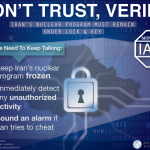On April 8th 2010, President Obama and President Medvedev signed New START, a nuclear weapons treaty designed to increase transparency and decrease deployed nuclear forces. While tension between Russia and the U.S. has inhibited diplomatic engagement on most issues, both countries are still working towards the agreed goal of 1550 deployed strategic nuclear warheads by February 2018. But as we celebrate the national security benefits of New START, looking past the agreement towards the future of nuclear arms control requires a crystal ball.
Six Years Post-Prague
Don’t worry, defense hawks – U.S. has more deployed nukes than Russia again
US-Russia Arms Control Treaty- New START 4th Anniversary

Last week marked the 4 year anniversary of New START, the most recent arms control treaty responsible for further reductions to the bloated nuclear arsenals of both the United States and Russia. The treaty is a landmark agreement, demonstrating the value of diplomacy and the ability to increase security while simultaneously reducing both nuclear weapons and spending.
Defense One Publishes Analysis on Sending Nuclear Weapons to Ukraine by Board Chair Lt. Gen. Robert Gard and Scoville Fellow Greg Terryn
The Wrong Move: Adding Nuclear Weapons to the Russia-Ukraine Conflict By Lt. General Robert Gard and Greg Terryn You may have missed it, but last month two key members of Congress asked the military to move additional U.S. nuclear weapons and dual-capable aircraft into Eastern Europe. Reps. Mike Rogers, R-Ala., chairman of the House Armed […]



